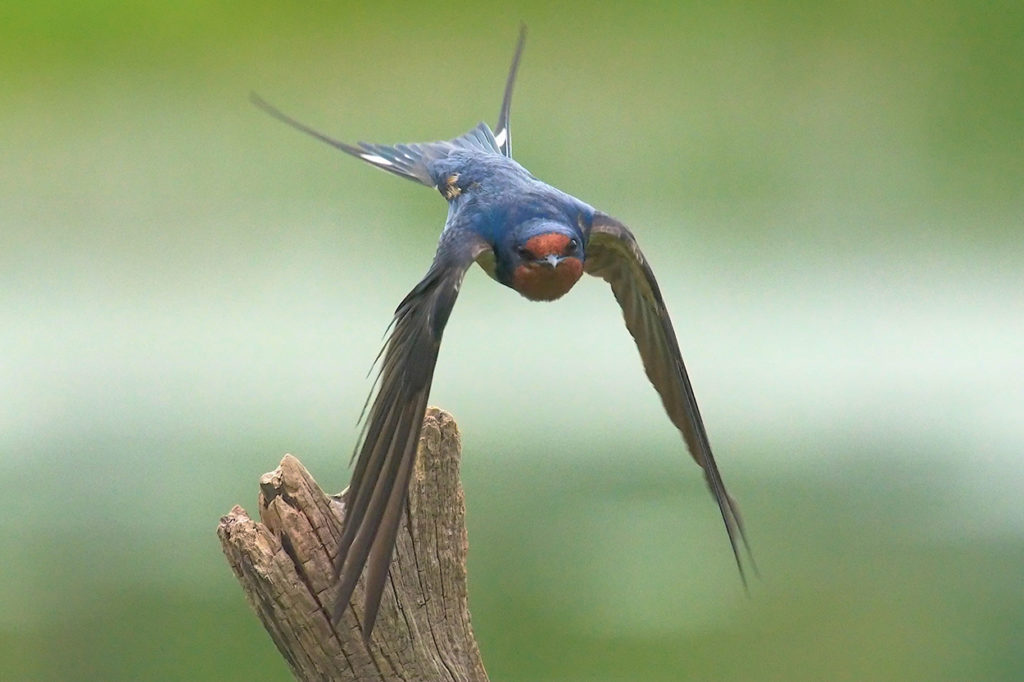It was a buggy, humid morning over the fields of Conte National Wildlife Refuge in the summer of 2021, and the Barn Swallows were loving it.
Fanning and tilting their forked tails, the birds feinted left and right to catch insects. Their two long outer tail feathers trailed behind them as they steered towards prey.
Looking closely, a careful observer might have noticed a third filament dangling behind more than a dozen of the birds— the antenna of a tiny radio transmitter, attached noninvasively to the birds’ rumps and destined to fall off by the end of the summer.
Mass Audubon’s Bird Conservation department had been at work tagging these swallows with transmitters all morning. Along with state biologists and refuge staff, the Mass Audubon team caught swallows as they entered their colony—a wooden building used to store the refuge’s boats— fitted the birds with transmitters and released them in a matter of minutes.
Where are Swallows Finding Food?
When the tagging effort wrapped up, the work of following the birds’ feeding patterns began— part of an ongoing study of what these birds need to survive and raise young successfully. Jon Atwood, Director of Bird Conservation, and Marie Rhodes, a student at Unity College in Maine, tracked the birds on foot with handheld receivers over the course of the summer, keeping tabs on how many birds fed over farm fields and native grasslands.

Swallows are open-country aerialists that pay little attention to what kind of shrubs or grasses cover the ground where they feed, at least as long as they can find insect prey above it. One possible reason swallows are declining is agricultural intensification— that is, growing more food on the same amount of land with heavier pesticide use and monocultures, which makes it harder for them to find food, both in farm fields and in nearby patches of native grassland.

So far, Jon and Marie’s work bore out the expectation that swallows find food more successfully over native grassland than more human-impacted open habitats (whether agriculture or development). They also foraged most frequently within a home range of just 2/3 of a mile— perhaps surprisingly close to the colony for a bird that covers hundreds of miles a day on migration. This reinforces the importance of preserving native grassland immediately adjacent to swallow colonies (in addition to accounting for other factors like grasslands’ size, habitat quality, and exposure to disturbance).
Next steps: Understanding the Diet-Habitat Connection
In the coming year, graduate researchers working with Mass Audubon will analyze DNA fragments in swallows’ excrement to identify what kinds of insects they’re eating across different habitats.
Hopefully, this will point to where swallows are (and aren’t) getting the nutrition they need, and establish whether local declines of the largest and most protein-dense insects are contributing to Barn Swallows’ shrinking numbers across their range.

